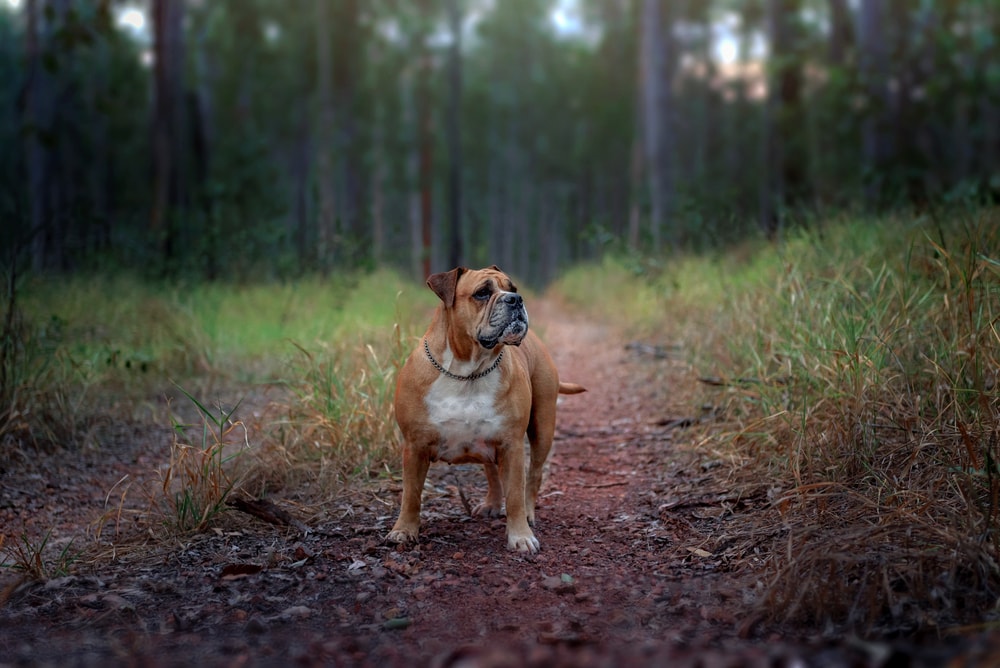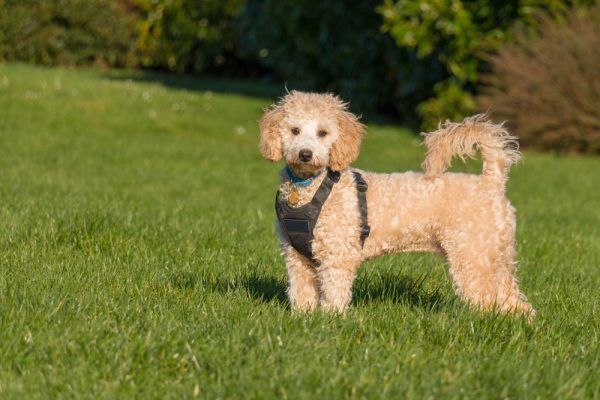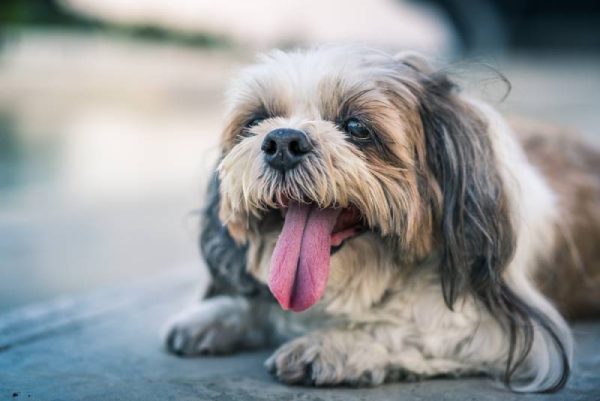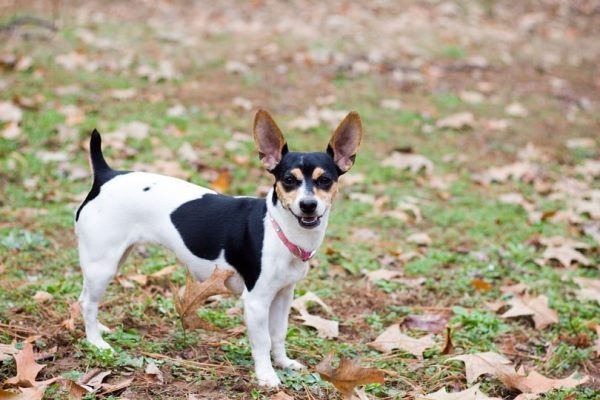In this article
View 8 More +The Australian Bulldog is a bit of a confusing breed. They are not recognized by the AKC or any other major kennel club. However, they do have their own club that keeps track of pedigrees and breeding records.
Similar to the American Bulldog, the Aussie Bulldog is simply an English Bulldog that has been selectively bred in Australia. There is much debate on whether the breed is different enough to be their own breed or whether they are simply an English bulldog.
The first Australian Bulldog was introduced to the public in 1998, so they are a relatively new breed. The Aussie Bulldog Club of Australia (ABCA) wasn’t started until 2007, so breeding records don’t go back any further than that.
Breed Overview
Height
17 – 20 inches
Weight
50 – 78 pounds
Lifespan
10 – 12 years
Colors
Brown, white, and black
Suitable for
Families with older children, those with plenty of time for socialization
Temperament
Confident, loyal, outgoing
This breed is extremely similar to the English Bulldog. However, they have also been bred with the Boxer, Bullmastiffs, and the English Staffordshire Bull Terrier. This makes them slightly different from the purebred English Bulldog. However, they are still extremely similar to other Bulldogs.
Australian Bulldog Characteristics

Australian Bulldog Puppies
The Australian Bulldog is exceedingly rare, especially outside of Australia. Litters are tracked by the Aussie Bulldog Club of Australia. If your puppy is an actually Australian Bulldog, they will come with proof of breed from this organization. This means that only registered breeders can technically produce this breed, which does raise the cost.
Furthermore, these dogs are difficult to breed. Medical interventions are often necessary, which increases the cost of breeding. When you buy a puppy, you’ll also be helping pay the medical bills that were necessary for that puppy to be born.
It’s important to know that the Aussie Bulldog is not as healthy as other breeds. There have been many efforts to improve Australian Bulldogs’ health, but they are still susceptible to a couple of common diseases.

Temperament & Intelligence of the Australian Bulldog
The Australian Bulldog is known as an affectionate breed. They were absolutely bred to be companion dogs, so they tend to be people-oriented. They love their people and prefer to be around their family at all times. They are extremely outgoing as well, greeting just about everyone with enthusiasm. They act the same around other dogs, which can make some canines feel a bit overwhelmed. Early socialization is important, not because they are aggressive, but because of their enthusiasm around other canines.
They aren’t shy around other dogs or even larger animals. This partially comes from their history as bull-baiting dogs. They were bred to not be scared of other animals. This can be useful if you plan on being around large animals, as you don’t have to worry about your canine being afraid. However, it can also cause issues. These dogs can get into trouble due to their fearlessness. After all, they should be wary of bulls and horses.
These dogs can be quite proud and don’t put up with much from anyone. They can get annoyed with other dogs easily and require careful training techniques. They need socialization to help them learn how to put up with people who may not act exactly like they want.
Most of the time, though, they’re laidback and calm. They’re perfectly content to sit in a corner of the room and not do much. They will likely greet visitors when they come in but will quickly choose a quiet spot and settle there.
These canines are extremely loyal to their families and owners. Some of them can be one-people dogs, where they bond closely with one person. They will often follow their owner around the house and ask for attention. When their family isn’t around, they typically spend most of the time sleeping and laying around. That said, they are not a dog that you can leave alone for much of the day. They do require regular and consistent attention.
While these dogs are typically calm and friendly, early socialization is required. Otherwise, they can develop a protective instinct around their family and property. We recommend training early and often. Puppy training classes are extremely useful for these dogs.
Are These Dogs Good for Families? 👪
These canines are calm and laidback, which works for many families. However, they are not particularly good with children. They aren’t patient and won’t put up with a bunch of ear tugging. They should always be monitored when around kids to ensure that everyone is comfortable at all times. We do not recommend them for families with small children. They do often get along well with older kids, as long as they are taught to treat the dog gently and with respect.
These dogs do best with families that have plenty of time on their hands, as they need quite a bit of attention. They aren’t dogs that you can simply leave alone all day, even if they seem to be extremely laidback. Without the correct attention, these dogs can become destructive and bored. They aren’t the best for families that are always on the go. They need people who also tend to be homebodies.
Does This Breed Get Along With Other Pets? 🐶 😽
They can with proper socialization. They aren’t particularly friendly toward other dogs and can get a bit territorial if not socialized properly. It is important that they are around other dogs from the time that they are puppies.
They are not particularly prone to chasing cats, though they will if they aren’t socialized with them. Their prey drive is minimal, so they can be taught that cats are not toys. However, early introduction is extremely important. Otherwise, the dog may see them as prey animals or intruders on their territory. Aussie Bulldogs that are raised with cats often get along with them.
Even if your dog is socialized properly, you should be careful about introducing new animals into the home. Be sure to do so slowly and carefully. Even though these dogs often get along with others when socialized, they may feel threatened if a new dog suddenly appears in their home. Follow all the appropriate introduction guidelines, including keeping the dogs separated as they get used to each other. This may require more work on your part, but it is essential if you want the two dogs to get along in the long term.

Things to Know When Owning an Australian Bulldog
Food & Diet Requirements 🦴
While Australian Bulldogs are healthier than some other breeds, they are prone to a few health problems. For this reason, it is essential to feed them a healthy, well-balanced diet. The Association of American Feed Control Officials (AAFCO) sets all standards and guidelines for cat and dog nutrition. When a diet meets its nutritional requirements, the AAFCO will leave its seal on the bag. However, it is not illegal to market and sell a food that does not meet these requirements.
For this reason, it is essential to check any dog food for the AAFCO statement before purchasing it. This ensures that the food meets all your dog’s nutritional needs.
Besides this, you should also ensure that your dog’s food is high in protein and meat. Most of the protein in the food should come from meat sources, so be wary of foods with high amounts of pea protein and similar ingredients. This may raise the protein content on the label, but veggie proteins are not complete and may not contain all the amino acids that your pet needs. In other words, they’re a lower-quality protein.
You should also avoid foods with high amounts of fillers. These include grains and veggies. Both can be nutritional in small amounts, but some formulas are packed with too many vegetables.
These dogs may be prone to food allergies. For this reason, we recommend regularly switching their food around. Dogs often become allergic to a specific protein after eating it for an extended period. It is important to switch their food to different formulas with different proteins regularly. This will also help ensure that your canine gets a varied amount of nutrients, which can help keep them healthy. Even if one formula is deficient in a specific nutrient, it won’t matter much if you’re switching their food often.
These dogs are quite active, so we recommend choosing a formula that is formulated for active dogs. These formulas usually include more protein, which is important to maintain healthy muscles.
Feed these dogs the recommended amount of food for whatever formula you are feeding them. These dogs can be prone to obesity, which can cause serious problems. It is important to keep their weight down, so we do not recommend free-feeding.

Exercise 🐕
While other Bulldogs are usually low-key, the Australian Bulldog actually has quite a high exercise need. They were mixed with a few high-energy breeds, so you will need to exercise this canine quite a bit. You should plan on long, daily walks when the temperature is suitable. These dogs are prone to overheating in warm weather and chill in cold weather. You must be careful when exercising them to avoid heat strokes and similar issues.
You should not allow your Aussie Bulldog to swim. While this may seem like a suitable way to help them exercise in hot weather, these dogs are not good swimmers. Their shortened faces put them at risk of inhaling water, even if they appear to be staying afloat easily. Their heavy chest is also difficult to keep afloat, which can cause extra problems.
These dogs do enjoy playtime in the backyard. The most important thing is to avoid exercising them in extreme weather. How exactly you exercise them doesn’t matter much.
Training 🎾
Aussie Bulldogs are decently intelligent. They aren’t the smartest dogs, but they are clever enough to learn quite a few commands. Their devoted nature also makes them somewhat easy to train. However, they can be quite independent and have a stubborn streak. They may go through a “teenager” phase when they are around 1 to 2 years old. They may become more stubborn during this time and seemingly forget things that you have previously taught them.
While you should train these dogs in all the usual commands, you should also make socialization a regular part of their routine. They can get along with pets, but they do require quite a bit of socialization to learn how to play nicely with other dogs. Otherwise, they can have a bit of a dominant streak or may feel threatened by the presence of other canines. This is especially true when they’re around their home or family, as they may feel the need to protect what is theirs.
They respond best to positive training techniques, as they can be a bit sensitive. Praise and treats are the way to go.
While you can train these dogs at home, we recommend dog training classes. This helps exercise your pet’s mind and socialize them with other dogs and enables you to get a handle on how to train them. Dog training classes are often much more about training the human and socializing the dog than anything else.
Grooming ✂️
Due to their shorter coats, these canines typically don’t require much grooming. They do shed quite a bit, so you should brush them at least weekly to remove excess hair. This will help your canine feel better too, especially in the summer, when too much hair can lead to heat retention. Plus, if you brush your canine, less hair will end up all over your furniture and clothing.
These dogs rarely need a bath unless they get into something dirty. In fact, moisture can build up in their skin folds from frequent bathing and cause infections. It is recommended to bathe these dogs extremely rarely to avoid this problem. Of course, if your dog rolls in a bunch of mud, a bath is going to be required.
Health and Conditions 🏥
While many efforts have been made to keep the Australian Bulldog as healthy as possible, this dog is prone to quite a few health problems. They are not the healthiest dogs out there in the least.
- None
- Brachycephalic Airway Obstruction Syndrome
- Hip Dysplasia
- Skin Allergies
Serious Conditions
- Brachycephalic Airway Obstruction Syndrome – Many of their health complications come from the key traits of the breed. For instance, their short face makes it difficult for them to breathe normally. As you might imagine, this can cause countless problems. They are more at risk when under anesthesia, which can make all surgeries inherently riskier. Some surgeries that are simple and straightforward can become high-risk with the Australian Bulldog. Difficulty breathing usually becomes most significant during exercise, stress, and extreme heat. These dogs are prone to things like heat exhaustion and exercise exhaustion. They are often unable to take deep or fast enough breaths to intake enough oxygen during these situations, which can quickly become life-threatening. Surgery is available to somewhat correct the issue. However, because these dogs are already more prone to surgical complications, it is often not done. The purpose of early treatment is to prevent secondary problems from occurring.
- Hip Dysplasia – Hip dysplasia is a deformity of the hip that occurs in many larger dog breeds. The Australian Bulldog is somewhat prone to this problem, as they are quite large. Usually, this deformity occurs when the dog is growing. For some reason, the ball and socket joints of the hip do not grow at equal rates, which causes the joints to wear down unnecessarily. Some dogs are simply genetically prone to this problem, and there isn’t much that you can do to fix it. Other times, the problem occurs due to improper feeding. If the dog consumes too many calories while young, they may grow too quickly. This can cause the hip joint to get out of balance and grow at an unusual rate, causing hip dysplasia. Symptoms usually include pain and weakness in the legs. They are extremely similar to the symptoms of arthritis. The dog may not want to climb stairs or jump. This is typically a progressive problem, where it gets worse over time. Usually, signs occur when the dog is around 1-2 years of age. Treatment typically involves keeping the dog as comfortable as possible through the use of anti-inflammatory drugs and pain relievers. It is not a curable condition, so treatment focuses on allowing the dog to live a pain-free life as much as possible.
- Skin Allergies – Skin conditions and allergies are common in these dogs. Their folds easily harbor bacteria and yeast of all sorts, which can lead to infections. You need to keep your dog’s wrinkles as clean as possible to avoid these issues. We recommend wiping their deep folds at least once a day. Avoid wet situations that can cause moisture buildup, like baths. There are several types of skin infections and irritants. Most of them end up leading to secondary infections as the dog scratches and picks at them. This can eventually create a serious problem, so we recommend keeping a close eye on your canine and acting fast if you notice any skin irritation. Treatment usually involves antibiotics and preventing the dog from digging at the lesions. Topical or oral antibiotics may be used, depending on the severity of the problem.
Male vs. Female
There is no significant difference between the sexes of this dog breed. Both are about the same size and have similar temperament traits.

3 Little-Known Facts About the Australian Bulldog
1. This breed isn’t officially recognized.
The American Kennel Club does not officially recognize this breed. However, this breed does have a club that keeps up with their breeding records. This puts the breed in an odd middle area. They do have a set breeding program and a way to register. However, they are not shown in dog shows and cannot be registered with any larger kennel club.
2. They are a newer breed.
The official records of this breed only go back to 2007. For this reason, they are rarer and do not have a strict standard. That said, the ABCA does have strict health standards that breeders must follow to register their puppies. This includes health checks for both the parents and the puppies. This is one reason that we recommend adopting a puppy from one of their breeders specifically.
3. The Aussie Bulldog is increasing in popularity.
This is especially true in Australia, where the breed has increased substantially since their inception in 1997. There are enough breeders and dog owners supporting the breed to run a whole club, which is quite an accomplishment in only a few decades. However, they are still extremely rare outside of Australia. For this reason, people in other countries will likely need to have their dogs imported.

Conclusion
The Australian Bulldog is a relatively newer breed that is mostly found in Australia. It is nearly impossible to find this breed elsewhere, which is one reason that they are quite expensive. This breed is similar to other Bulldogs. Their noses are flattened and they have excess skin folds. These characteristics put them at risk for a variety of health problems, so be prepared to pay a significant amount in vet bills if you adopt this dog.
They do make good family animals as long as they are properly socialized. They’re easy to train due to their intelligence and devoted nature. The most important part of their training regimen should be socialization, though. Otherwise, these dogs can be excessively territorial and protective of their people. This can lead to problems with other dogs.
Find out more about other popular dog breeds:
- Border Terrier | Breed Info, Pictures, Traits & Care Guide
- Broholmer | Breed Info, Pictures, Temperament, Facts & Care Guide
- Bull Boxer | Mixed Breed Guide (with Pictures)
Featured Image Credit: JCM Photos, Shutterstock


















